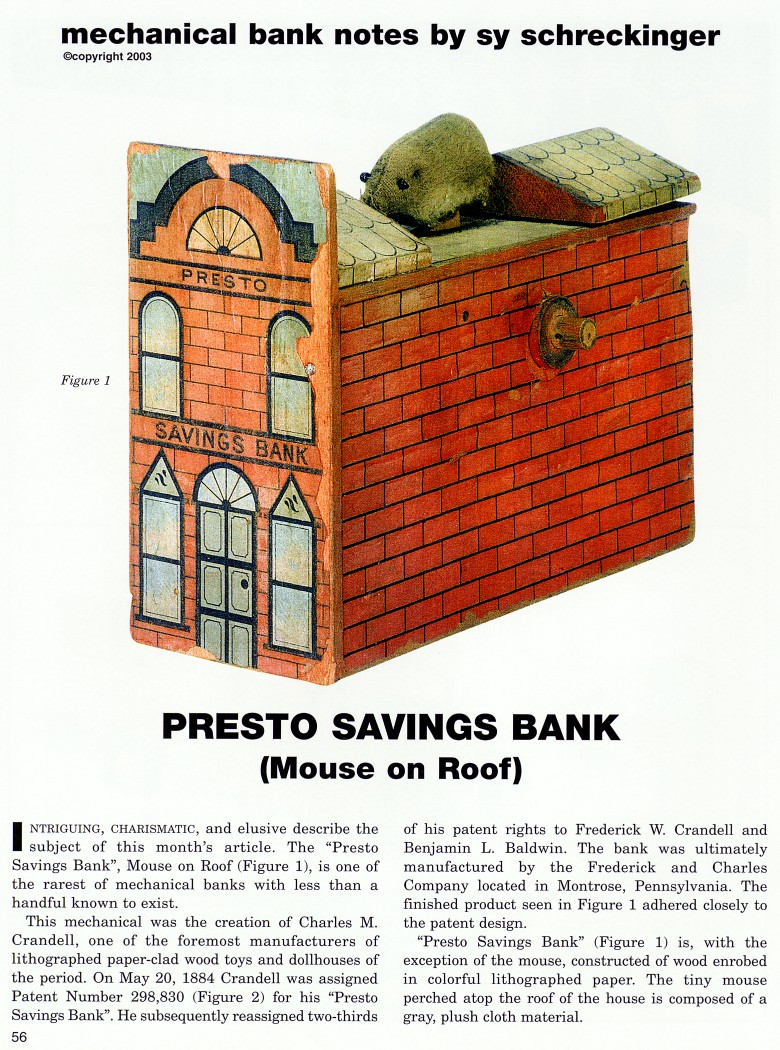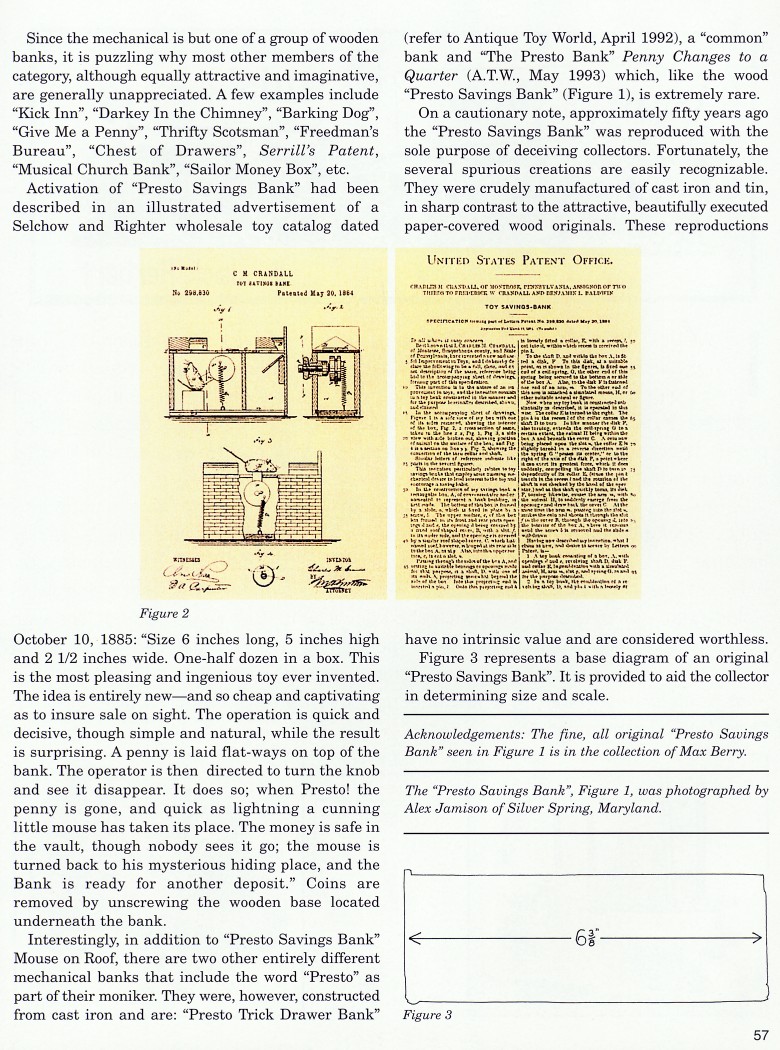|
Presto Savings Bank
(Mouse on Roof)
by Sy Schreckinger – ANTIQUE TOY WORLD Magazine – April, 2003
Intriguing, charismatic, and elusive describe
the subject of this month's article. The "Presto Savings Bank", Mouse on
Roof (Figure 1), is one of the rarest of mechanical banks with less than a
handful known to exist.
This mechanical was the creation of Charles M. Crandell, one of the
foremost manufacturers of lithographed paper-clad wood toys and dollhouses
of the period. On May 20, 1884 Crandell was assigned Patent Number
298,830
(Figure 2) for his "Presto Savings Bank". He subsequently reassigned
two-thirds of his patent rights to Frederick W. Crandell and Benjamin L.
Baldwin. The bank was ultimately manufactured by the Frederick and Charles
Company located in Montrose, Pennsylvania. The finished product seen in
Figure 1 adhered closely to the patent design.
"Presto Savings Bank" (Figure 1) is, with the exception of the mouse,
constructed of wood enrobed in colorful lithographed paper. The tiny mouse
perched atop the roof of the house is composed of a gray, plush cloth
material.
Since the mechanical is but one of a group of wooden banks, it is
puzzling why most other members of the category, although equally
attractive and imaginative, are generally unappreciated. A few examples
include "Kick Inn", "Darkey In the Chimney", "Barking Dog", "Give Me a
Penny", "Thrifty Scotsman", "Freedman's Bureau", "Chest of Drawers",
Serrill's Patent, "Musical Church Bank", "Sailor Money Box", etc.
Activation of "Presto Savings Bank" had been described in an
illustrated advertisement of a Selchow and Righter wholesale toy catalog
dated October 10, 1885: "Size 6 inches long, 5 inches high and 2-1/2
inches wide. One-half dozen in a box. This is the most pleasing and
ingenious toy ever invented. The idea is entirely new — and so cheap and
captivating as to insure sale on sight. The operation is quick and
decisive, though simple and natural, while the result is surprising. A
penny is laid flat-ways on top of the bank. The operator is then directed
to turn the knob and see it disappear. It does so; when Presto! the penny
is gone, and quick as lightning a cunning little mouse has taken its
place. The money is safe in the vault, though nobody sees it go; the mouse
is turned back to his mysterious hiding place, and the Bank is ready for
another deposit." Coins are removed by unscrewing the wooden base located
underneath the bank.
Interestingly, in addition to "Presto Savings Bank" Mouse on Roof,
there are two other entirely different mechanical banks that include the
word "Presto" as part of their moniker. They were, however, constructed
from cast iron and are: "Presto Trick Drawer Bank" (refer to Antique Toy
World, April 1992), a "common" bank and "The Presto Bank" Penny Changes to
a Quarter (A.T.W., May 1993) which, like the wood "Presto Savings Bank"
(Figure 1), is extremely rare.
On a cautionary note, approximately fifty years ago the "Presto
Savings Bank" was reproduced with the sole purpose of deceiving
collectors. Fortunately, the several spurious creations are easily
recognizable. They were crudely manufactured of cast iron and tin, in
sharp contrast to the attractive, beautifully executed paper-covered wood
originals. These reproductions have no intrinsic value and are considered
worthless.
Figure 3 represents a base diagram of an original "Presto Savings
Bank". It is provided to aid the collector in determining size and scale.
Acknowledgements: The fine, all original "Presto Savings Bank" seen
in Figure 1 is in the collection of Max Berry.
The "Presto Savings Bank", Figure 1, was photographed by Alex Jamison
of Silver Spring, Maryland.
|


